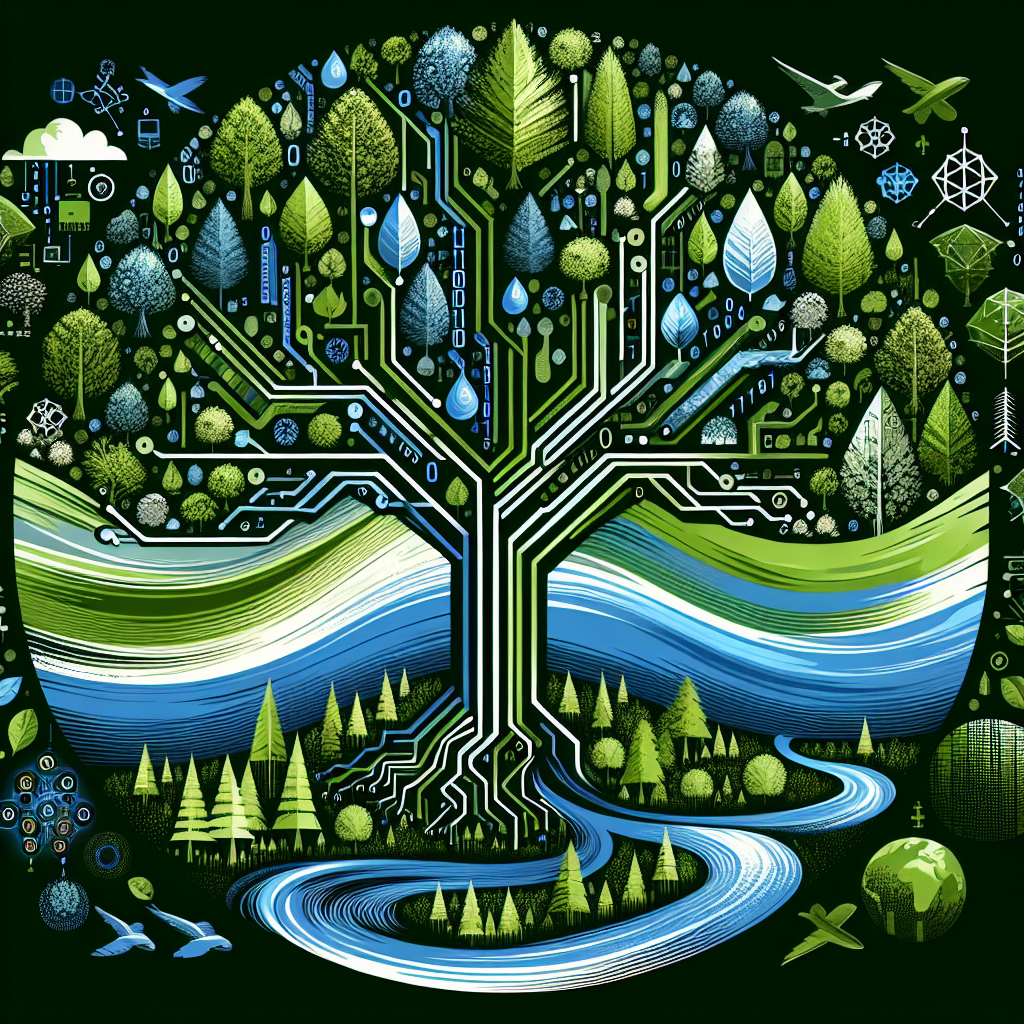In recent years, Artificial Intelligence (AI) has emerged as a powerful tool in the fight against environmental degradation and the conservation of natural resources. From monitoring wildlife populations to predicting natural disasters, AI is revolutionizing the way we approach environmental protection and conservation. In this article, we will explore the role of AI in these crucial areas and discuss its potential to drive positive change for our planet.
1. Monitoring and Conservation of Wildlife
One of the key applications of AI in environmental protection is the monitoring and conservation of wildlife. Traditional methods of monitoring wildlife populations, such as camera traps and satellite tracking, can be time-consuming and labor-intensive. AI-powered technologies, such as drones and smart cameras, are now being used to collect data on wildlife populations more efficiently and accurately.
For example, the conservation organization WWF has developed an AI-powered system called TrailGuard AI, which uses hidden cameras and machine learning algorithms to detect poachers in real-time. This technology has proven to be highly effective in protecting endangered species such as elephants and rhinos from illegal hunting.
AI is also being used to analyze large amounts of data collected from satellite imagery to track the movements of wildlife populations and identify areas of habitat loss. By providing real-time information on the status of wildlife populations, AI is helping conservationists make more informed decisions about how to protect endangered species and their habitats.
2. Predicting and Mitigating Natural Disasters
AI is also being used to predict and mitigate the impact of natural disasters, such as floods, wildfires, and hurricanes. By analyzing historical data and real-time information from sensors and satellites, AI algorithms can identify patterns and trends that may indicate an impending natural disaster.
For example, researchers at NASA are using AI to analyze satellite images and weather data to predict the likelihood of wildfires in different regions. By identifying areas at high risk of wildfires, authorities can take proactive measures to prevent or mitigate the impact of these disasters.
In addition, AI-powered algorithms are being used to optimize the response to natural disasters, such as coordinating emergency services and evacuations more efficiently. By using AI to analyze data in real-time, authorities can make faster and more informed decisions about how to respond to natural disasters and protect the lives and property of affected communities.
3. Environmental Monitoring and Pollution Control
AI is also playing a crucial role in monitoring and controlling pollution in our environment. By analyzing data from sensors, satellites, and other sources, AI algorithms can detect and track pollution levels in the air, water, and soil.
For example, the startup Aclima has developed a platform that uses AI to analyze data from sensors attached to Google Street View cars to map air pollution in urban areas. By collecting real-time data on air quality, authorities can identify sources of pollution and take measures to reduce emissions and improve public health.
AI is also being used to monitor and control pollution in water bodies, such as rivers and oceans. By analyzing data from sensors and satellites, AI algorithms can detect pollution sources, such as oil spills or industrial waste, and track their movements to prevent further contamination of the environment.
4. Conservation Planning and Sustainable Development
AI is also being used to support conservation planning and sustainable development initiatives. By analyzing data on land use, biodiversity, and climate change, AI algorithms can help identify areas of high conservation value and prioritize conservation efforts.
For example, the conservation organization Conservation International is using AI to analyze satellite imagery and data on biodiversity to identify key areas for conservation in the Amazon rainforest. By mapping out areas of high biodiversity and habitat loss, conservationists can target their efforts more effectively and protect critical ecosystems from destruction.
AI is also being used to support sustainable development initiatives, such as renewable energy projects and green infrastructure. By analyzing data on energy consumption, carbon emissions, and other factors, AI algorithms can help policymakers make more informed decisions about how to reduce environmental impact and promote sustainable development.
Frequently Asked Questions (FAQs):
1. How is AI being used to monitor wildlife populations?
AI is being used to monitor wildlife populations through the use of drones, smart cameras, and other technologies that collect data on wildlife movements and behavior. By analyzing this data with machine learning algorithms, conservationists can track the status of wildlife populations more efficiently and accurately.
2. Can AI help predict natural disasters?
Yes, AI can help predict natural disasters by analyzing historical data and real-time information to identify patterns and trends that may indicate an impending disaster. By using AI algorithms to analyze data from sensors and satellites, authorities can make more informed decisions about how to respond to natural disasters and mitigate their impact.
3. How is AI being used to monitor pollution levels?
AI is being used to monitor pollution levels in the air, water, and soil by analyzing data from sensors, satellites, and other sources. By detecting and tracking pollution sources, such as industrial emissions or oil spills, AI algorithms can help authorities take measures to reduce pollution and protect the environment.
4. What role does AI play in conservation planning?
AI plays a crucial role in conservation planning by analyzing data on land use, biodiversity, and climate change to identify areas of high conservation value. By mapping out key areas for conservation, AI algorithms can help prioritize conservation efforts and protect critical ecosystems from destruction.
In conclusion, AI is revolutionizing the way we approach environmental protection and conservation by providing new tools and technologies to monitor wildlife populations, predict natural disasters, control pollution, and support sustainable development initiatives. By harnessing the power of AI, we can drive positive change for our planet and ensure a sustainable future for generations to come.

